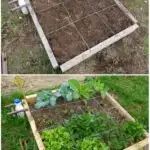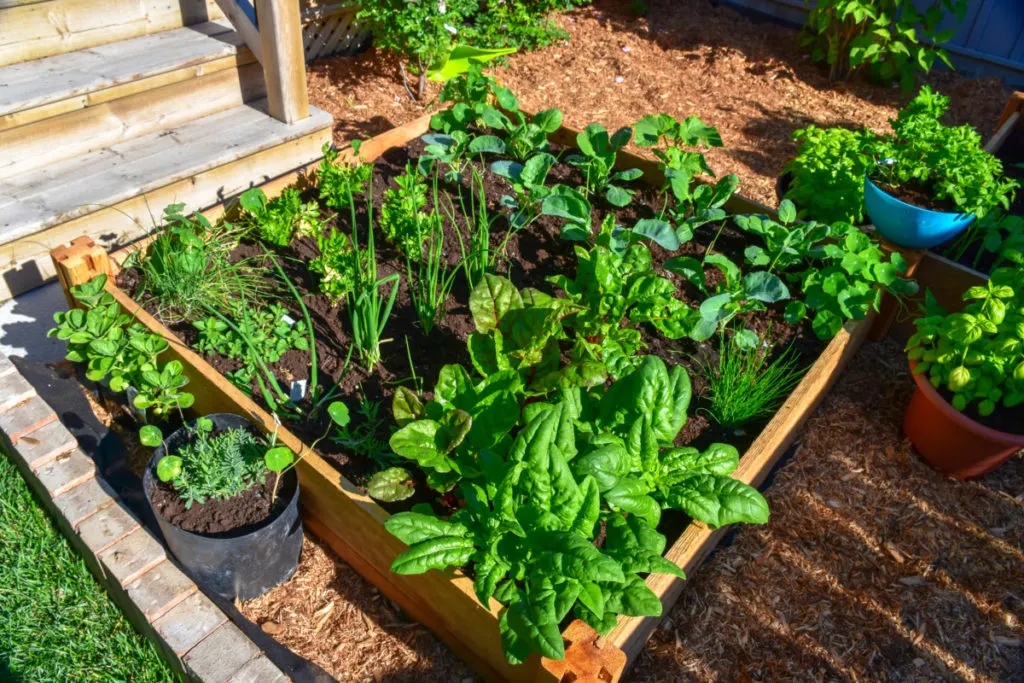
I stumbled across square foot gardening in my early twenties. I was watching PBS one Saturday morning, and there was this guy named Mel Bartholomew playing in the dirt.
The general idea he was presenting was to grow a lot of food in a small footprint. I called the 1-800 number and ordered my copy of his book.
Remember those? 1-800 numbers, you know, before Amazon.
As you can see, I’ve put the book and the principles of Square Foot Gardening to good use over the years.
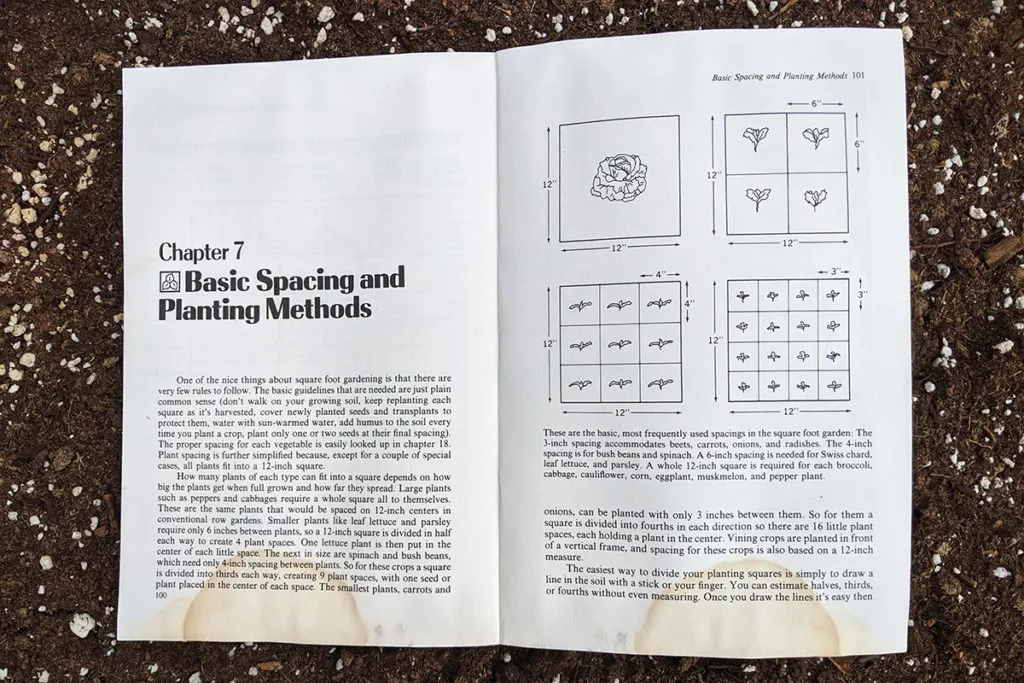
Join me, and we’ll walk through getting started with the square foot method for growing food. Once you know the basics, it’s easy to adapt this gardening method to many different layouts.
What is Square Foot Gardening?
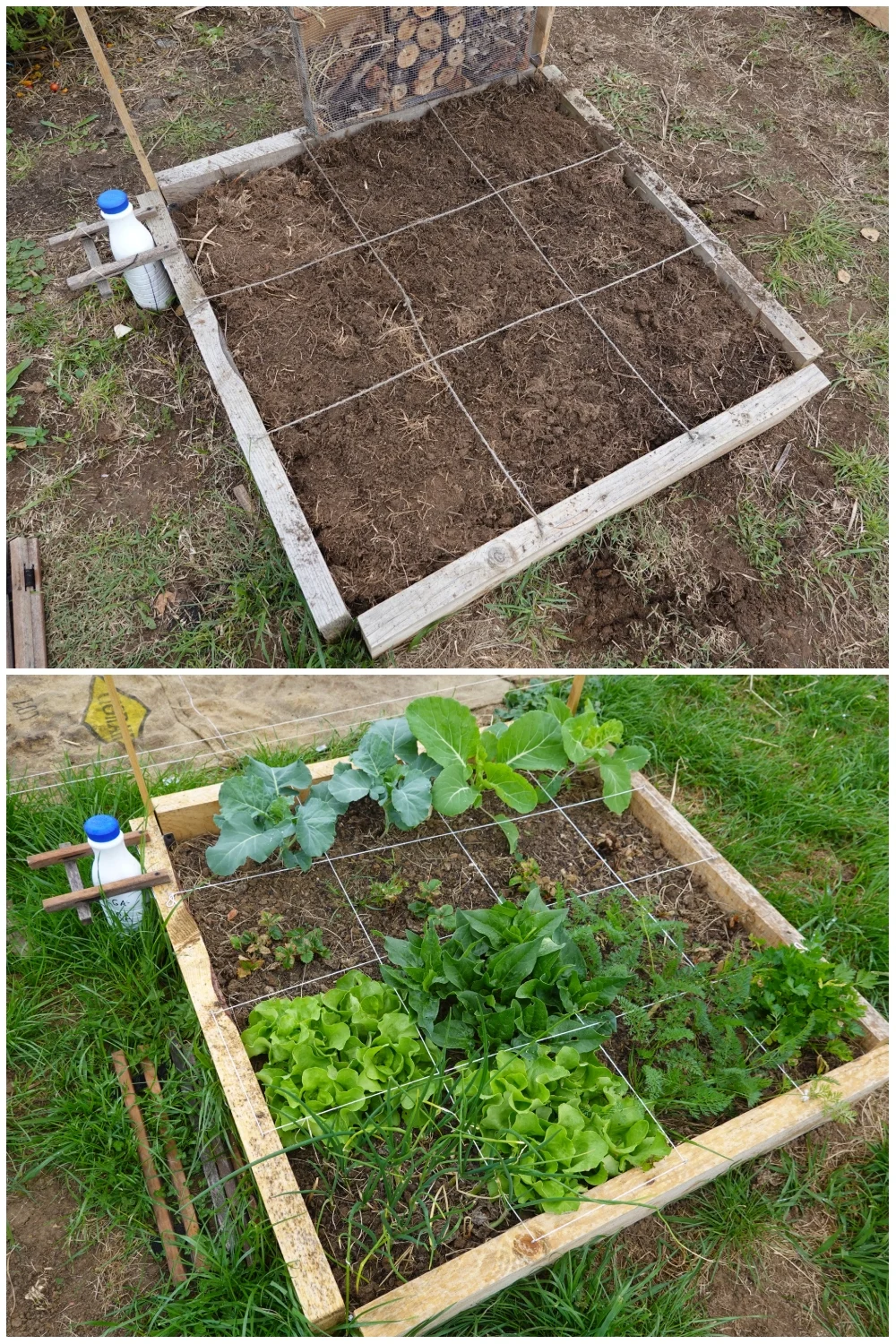
Square foot gardening is a method of planting vegetables, herbs and flowers to get the most food from the smallest footprint with minimal effort by growing in 4’ x 4’ beds and planting vegetables by individual square feet instead of rows.
My kind of gardening.
Mel, the creator of this unusual method, retired as a civil engineer in the mid-70s and decided to take up gardening with his newfound leisure time. Much to his displeasure, he found the entire process time-consuming, grueling, and altogether not very enjoyable.
As an engineer, Mel couldn’t get over the wasteful use of space – growing long lines of vegetables.
After asking many gardeners why they grew vegetables this way, he tired of the usual, “Because that’s the way we’ve always done it,” response and decided there had to be a better way.
And he was right.
Growing vegetables in long lines is simply one more commercial farming practice that’s found its way into our backyards. It’s wasteful, requires more work, and isn’t practical for the home gardener.
Through trial and error, Mel developed a way to grow food that took up less space, required less weeding, and less water.
He took gardening the way everyone was doing it and made it easier and less wasteful. Thanks, Mel!
The Basics of Square Foot Gardening
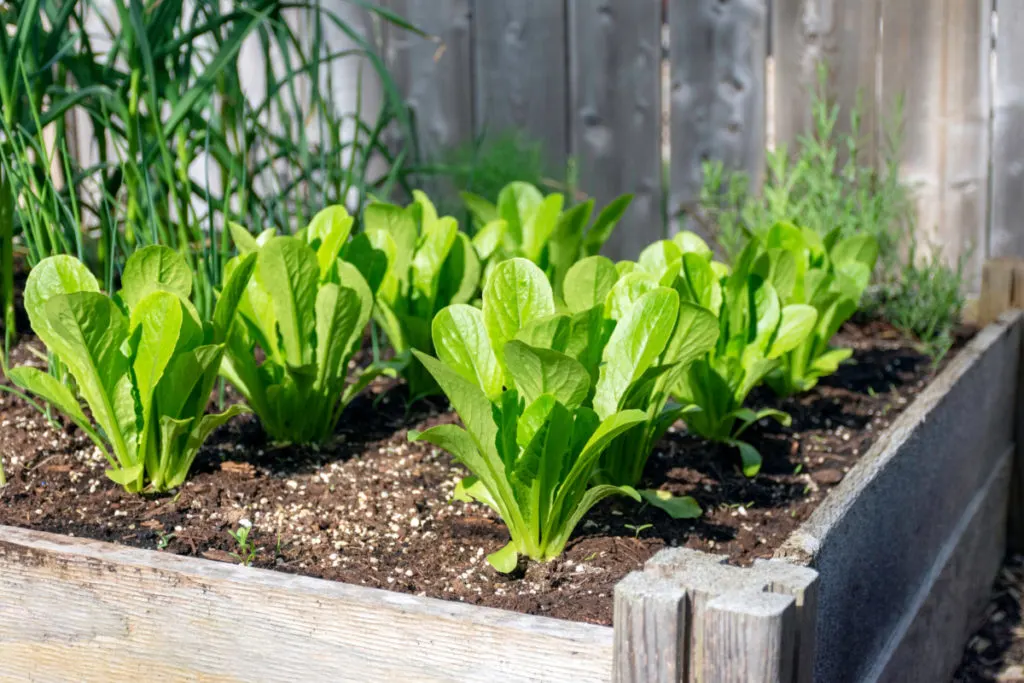
- You’ll plan and grow in 4’ x 4’ beds.
- Soil only needs to be 6” deep and should be light and fluffy.
- Make a grid using string across the top of your beds to separate each one into sixteen individual one-foot squares.
- Vegetables are planted and spaced per individual square foot instead of in a row—for example – nine spinach plants in one square foot – three rows of three plants each.
- Water your garden by hand using a cup and bucket.
And that’s pretty much all there is to it.
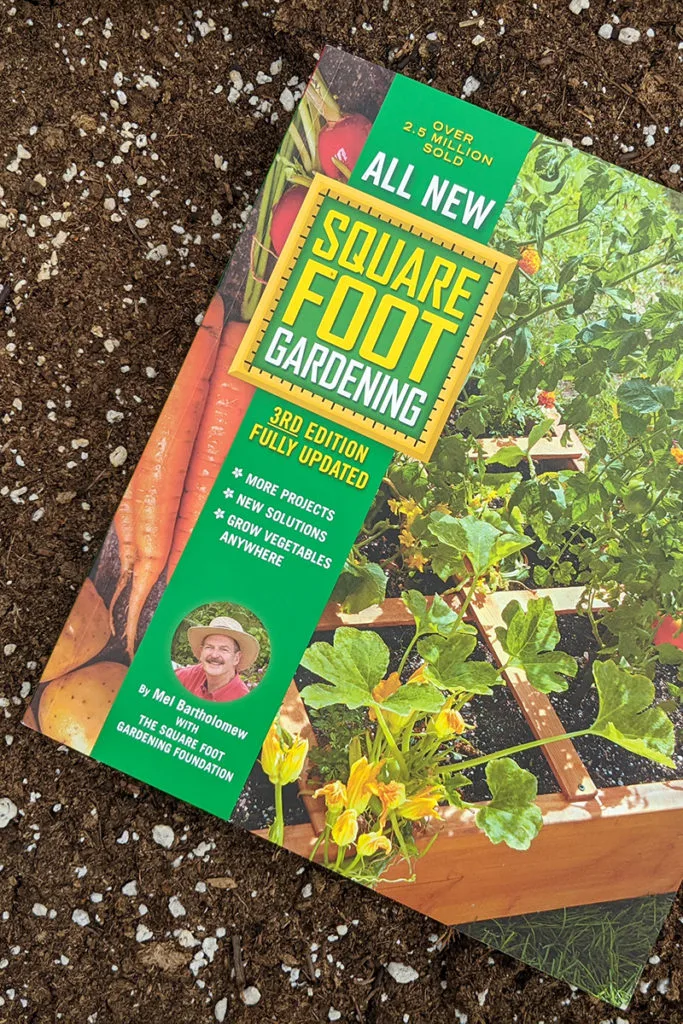
Why 4’ x 4’ Beds?
Well, quite simply because it’s easier to manage. If you garden in a 4’x4’ square, you can easily reach every part of the square without walking down long rows or hopping across vegetables to get to another area.
And with his unique plant-spacing, you can grow a lot more food in that 4’x4’ area. Keeping your garden compact means it’s easier to weed and water too. As any gardener will tell you, easier means you’re more likely to stay on top of your garden
But I Don’t Have Very Good Soil
No worries, much like any traditional raised bed garden, your existing soil doesn’t matter. You’ll be filling your beds about 6” deep with fluffy, potting soil. That’s it, just 6”. Filling a square foot gardening bed is cheaper than most raised beds.
Grids Make Things Easier
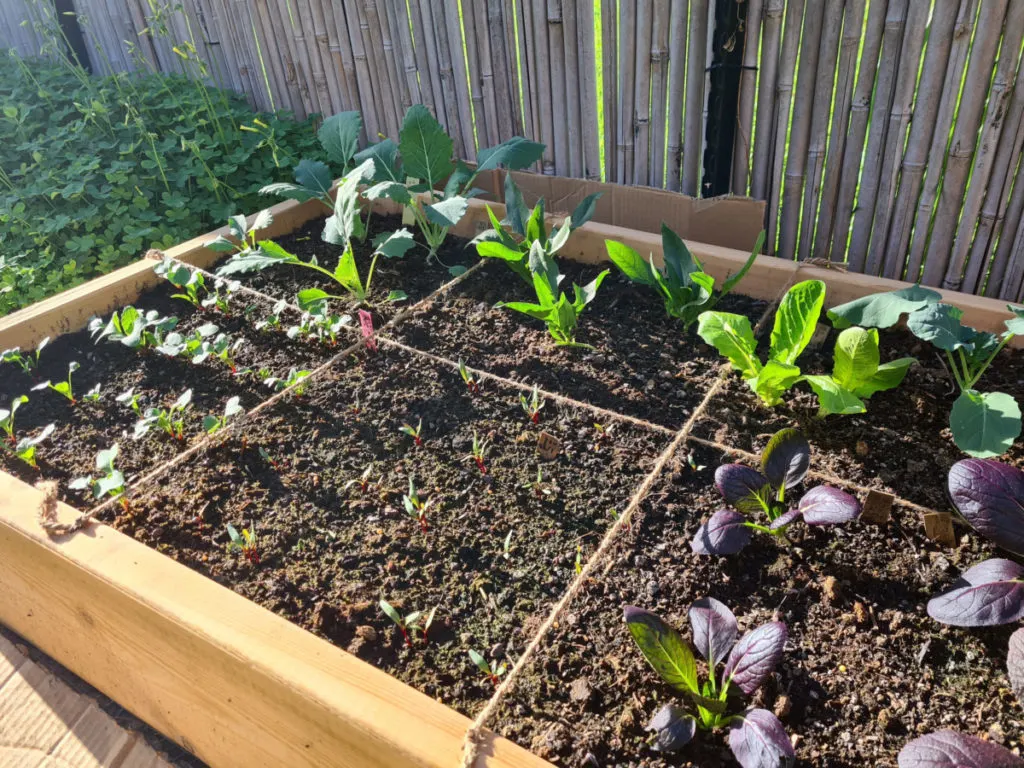
The key to all of this is planting each square foot with a single variety of vegetable, herb or flower. You’re treating each square like its own little mini-garden. Instead of using rows to keep things neat and tidy and to note where each vegetable is, we use a grid system.
You can easily mark out your sixteen squares with twine tacked onto the outsides of the beds, or you can use strips of thin wood, like balsa.
Once you’ve marked out the squares, you’re ready to plant.
How Do I Know How Many Plants Fit in a Square Foot
If you want to give square foot gardening a try, I highly l recommend picking up the latest edition of Mel’s bestselling book, Square Foot Gardening 3rd Edition.
The book will equip you with everything you need to know to begin square foot gardening, from getting set up, right on through to harvesting.
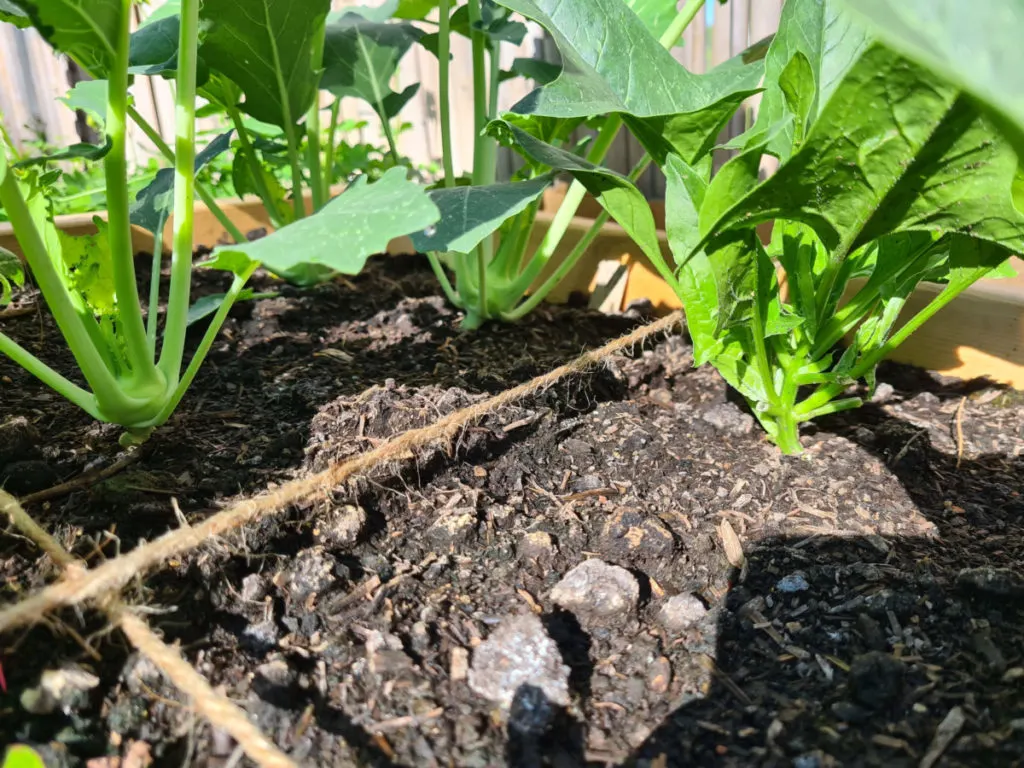
The book covers soil, including the famous ‘Mel’s Mix’ blend, building a 4’ x 4’ bed, when to sow, plant spacing for individual veggies, weeding, watering, etc.
It’s a handy resource that I refer to again and again. There might be more dirt in the pages of my copy of Square Foot Gardening than there is in my gardening gloves.
If you choose not to purchase the book, you can easily find vegetable spacing charts online. I prefer to go straight to the source – square foot vegetable spacing guidelines.
Wait, What About Vining Plants Like Cucumbers?
Yes, you can grow plants that like to travel and sprawl all over the garden using this method too. You simply train them to grow up instead of out.
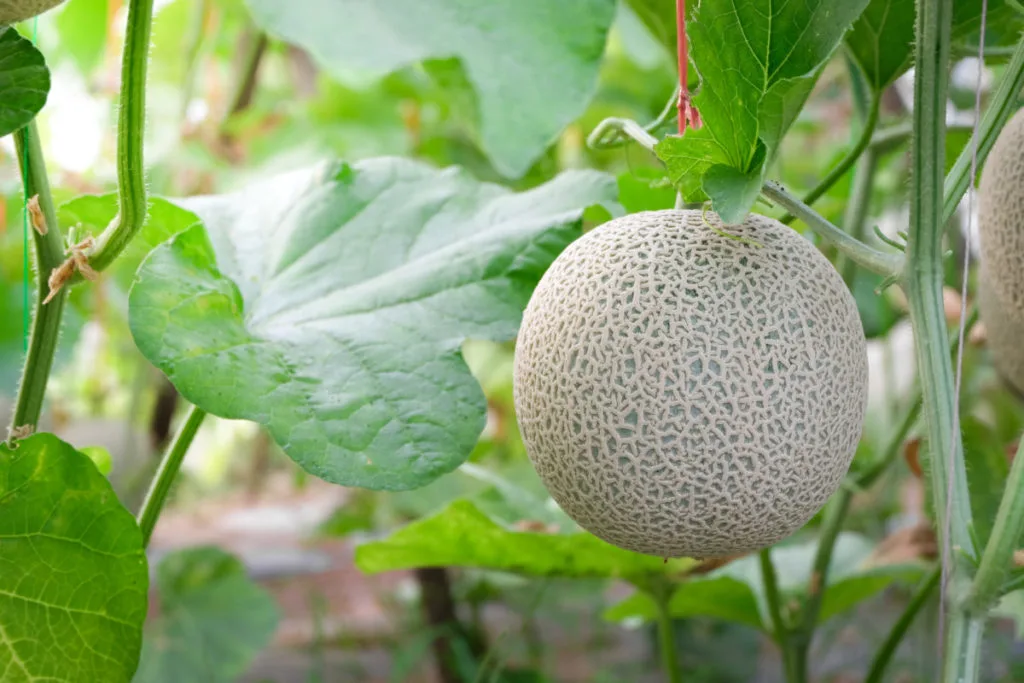
You’ll be adding sturdy arches on one end of your 4’ x 4’ bed and train plants like cucumbers, beans, even melons to grow up. Most folks choose to use PVC pipes or conduit to make their frames.
When growing heavier items like melons, you’ll tie a string around the top stem of the melon and tie it to the overhead support. Or you can use old stockings and slip the melon into the foot and tie the leg of the stocking to the top of the frame. The melon will continue to grow, and to harvest it you remove the stocking.
Seriously? A cup and a bucket to water the whole garden?
Yes, the idea is that you don’t need to soak the entire area by watering with a hose or watering can. Most plants do better when watered directly at their base anyway. Because you no longer have long rows of plants, you can easily put your bucket next to the bed and use a cup to water individual plants.
Strawberries and tomatoes specifically become more susceptible to disease when they’re watered overhead. Not only does watering at the base save water, but you end up with healthier plants too.
If you weed while you water, you’ll kill two birds with one stone. I don’t know why, but there’s something nice about tending to each square individually. Breaking up these tedious tasks over a grid makes them go quicker.
I Grow a No-Dig/Haybale/Raised Bed Garden, Will Square Foot Gardening Work for Me?
Yup. The beauty of this growing system its adaptability with nearly any type of existing gardening set up. Just stick with the grid and plant spacing.
While the book walks you through setting up 4’ x 4’ raised beds, if you already have an existing setup, converting it to the square foot method is as simple as laying out your plants differently. You may want to change your paths if you have a larger setup, but aside from that, this way of growing works surprisingly well with many different existing gardening plans.
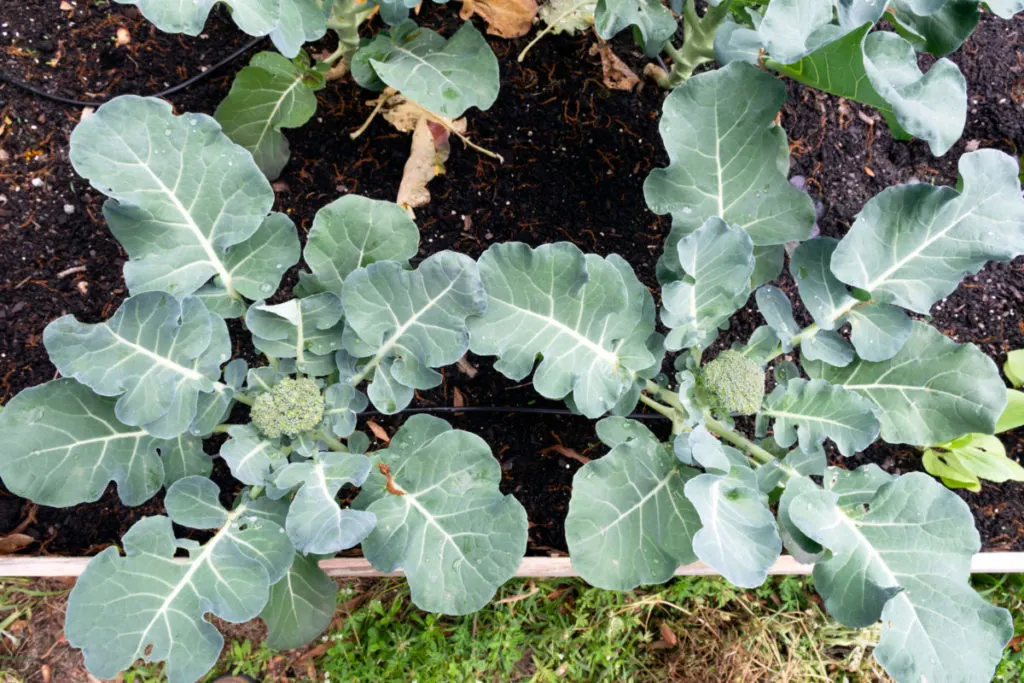
I’ve tried many different types of gardening over the years and always used the basic square foot grids to plan and space my gardens. I’ve even adapted the square foot method to my rooftop container garden.
Replant Each Square Again and Again
Succession planting is incredibly easy with the square foot method too. Once you’ve harvested the plants from one of your squares, you can easily replant it with something else. Radishes are my favorite thing to pop in the ground for a quick harvest that maximizes a single square foot – 16 radishes per square foot.
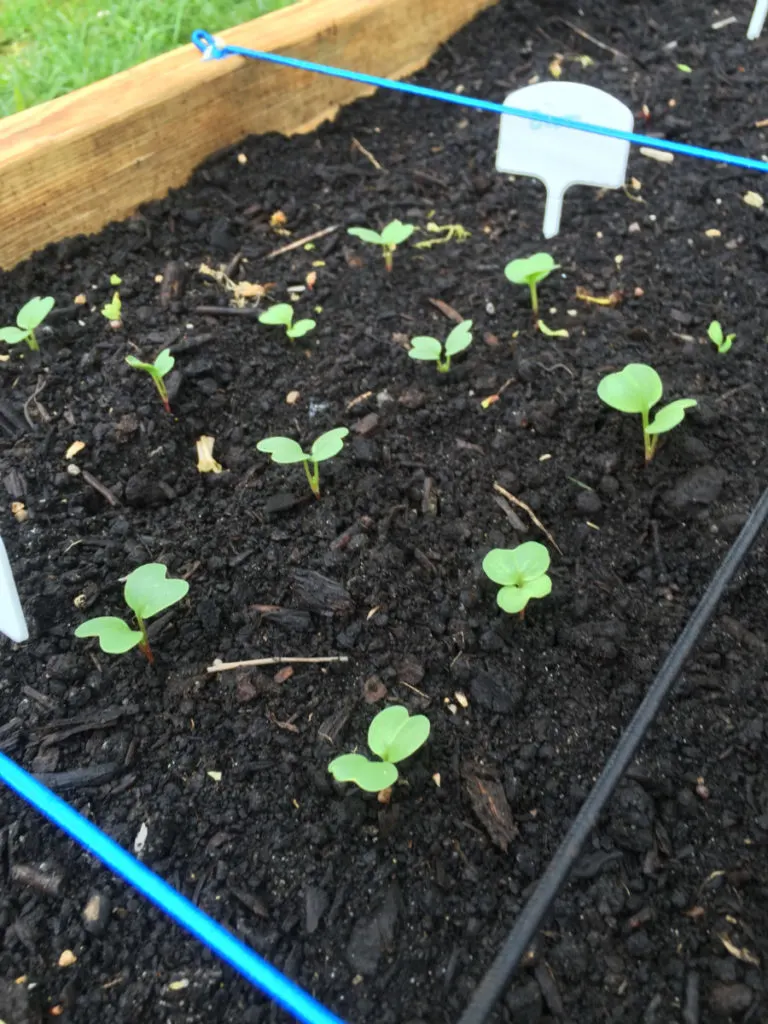
Enjoy a Longer Growing Season
Because you’re growing in 4’ x 4’ beds, it’s much easier to cover them with row covers or a polytunnel. You can extend your growing season both in the spring and the fall by covering your beds. Not only will you get more food out of each space, but you’ll get a longer season too.
Using a Square Foot Seed Template
I’m not much of a gadget person. I don’t have a lot of space, so if something is going in my home, it had better earn its keep. However, when I saw this seed square template, I made an exception and ordered it.
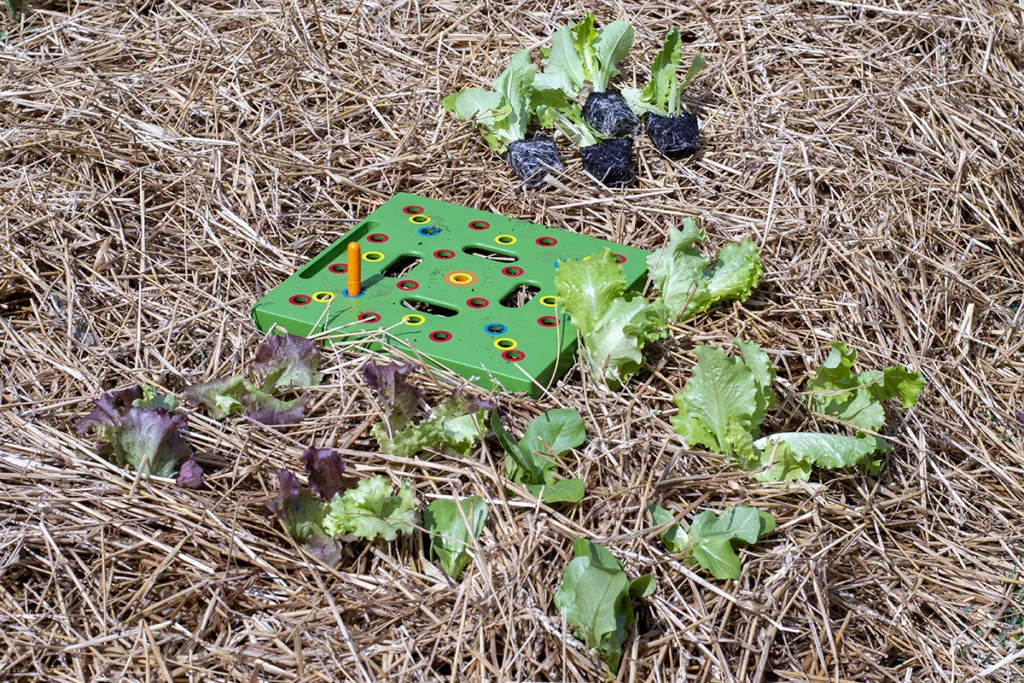
Oh wow, I’m glad I did.
When you garden in rows, it’s common to plant many extra seeds and then thin out the seedlings into the spacing you want. With square foot gardening, you plant exactly the number of seeds or plants per square. Doing so means your seed packets will last you a few years rather than one season.
(If you get the oddball seed that doesn’t germinate, you can poke another seed in that hole later on.)
I always struggle with sowing seeds using the square foot method to get the spacing right, especially when it comes to the vegetables that are sixteen plants per square foot, such as carrots or radishes.
This 1’ x 1’ template has seed spacing holes that correspond to the square foot gardening method. Each plant spacing grid has a specific-colored hole to use, i.e., red for sixteen plants per square foot, blue for four plants per square foot, and so on.

It comes with a handy little tool you can use to poke holes in the dirt through the template to mark out where plants go, or you can simply direct seed using the template. The tool has a magnet in it and stays snapped into place on the template.
There’s even a tiny funnel on the back, which you can use to pour out seeds.
This template has made my gardening life so much easier already, and the season is just beginning. I wish I had this thing years ago!
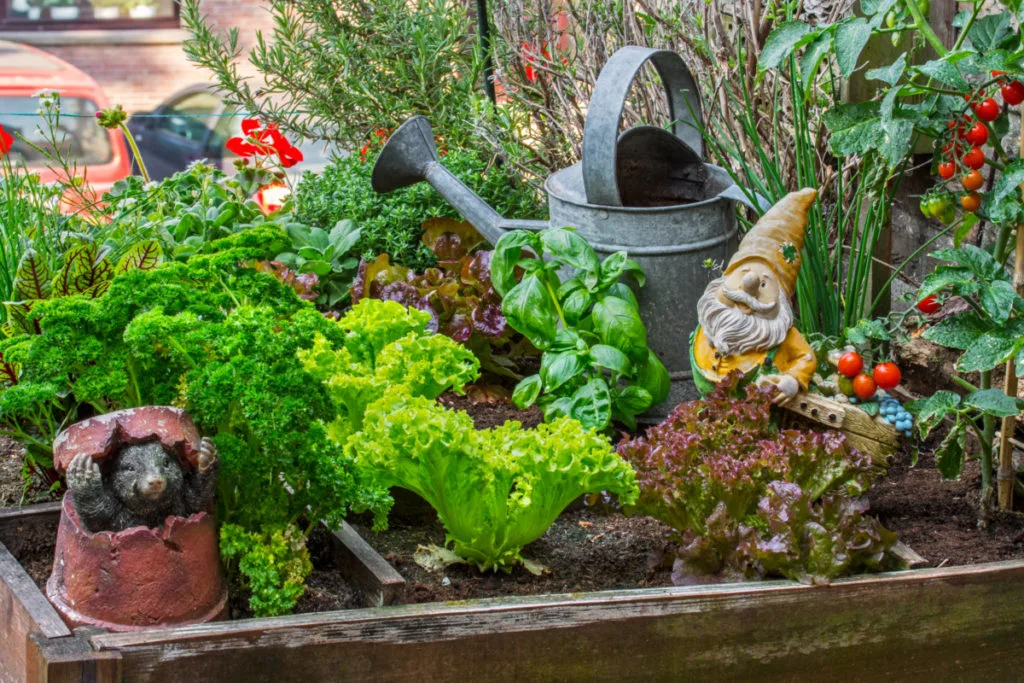
If you want a garden that maximizes a small amount of space yet produces a good yield, give square foot gardening a try. You’ll be amazed at how much easier it is to get started and keep up throughout the gardening season.

Get the famous Rural Sprout newsletter delivered to your inbox.
Including Sunday musings from our editor, Tracey, as well as “What’s Up Wednesday” our roundup of what’s in season and new article updates and alerts.


